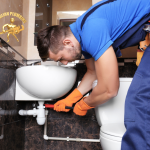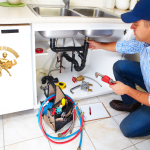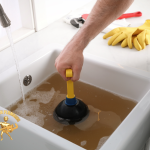In recent years, technology has profoundly transformed the field of leak detection, particularly within the residential context. Traditionally, identifying leaks in home plumbing systems, be it water or gas, relied heavily on manual inspection and physical symptoms like water spots, dampness, or the smell of gas. However, technological advancements have shifted this paradigm towards more proactive and automated methods.
Today’s technology employs sophisticated sensors, advanced algorithms, and smart home integration, allowing for real-time monitoring and early detection of leaks. This shift not only enhances the efficiency of detecting leaks but also significantly reduces the response time to potential hazards, mitigating the risks of extensive damage or dangerous gas build-ups. From simple audible alarms to complex networked systems, technological solutions now offer a wide range of options catering to different needs and budgets.
Importance of Detecting Both Water and Gas Leaks in Homes
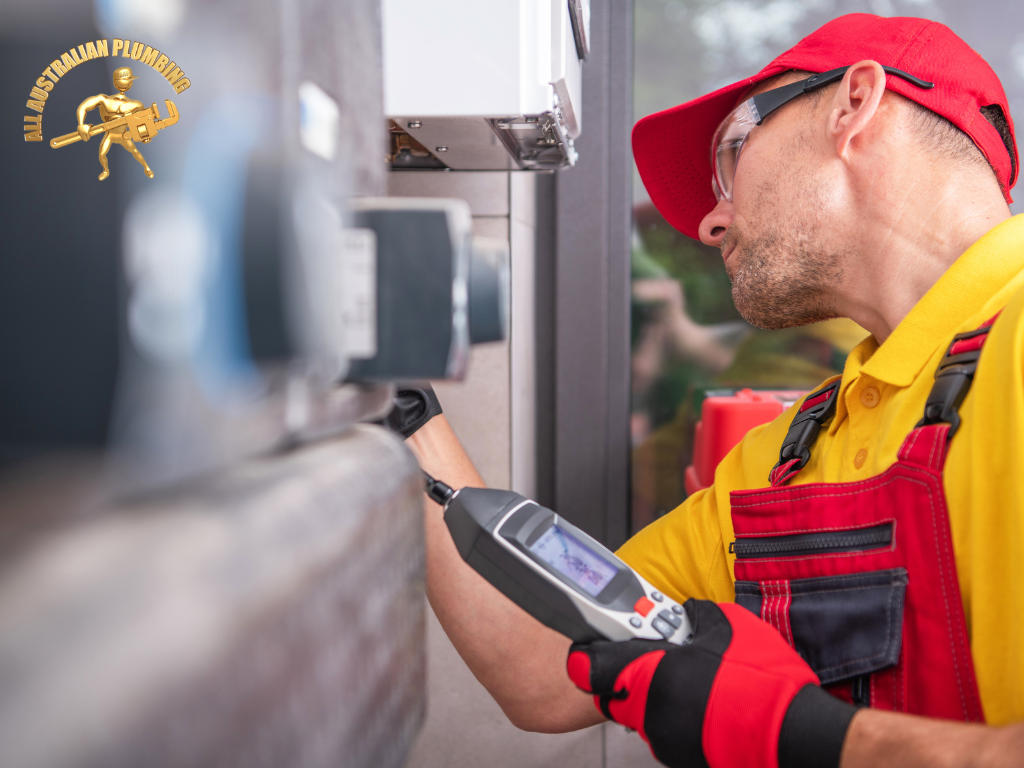
Detecting leaks in a home setting is crucial for several reasons:
- Water Leaks: Undetected water leaks can lead to significant damage to the home structure, including mold growth, wood rot, and deterioration of foundations. Furthermore, they contribute to substantial water waste, which is environmentally detrimental and costly for the homeowner in terms of water bills.
- Gas Leaks: Gas leaks pose a more immediate risk, as they can lead to fire hazards or explosions. They also present health risks due to the potential for carbon monoxide poisoning, especially in poorly ventilated spaces.
Early detection of both water leaks and gas leaks is essential for the safety, health, and financial well-being of homeowners. Modern technology plays a pivotal role in this process, providing tools that are not only effective but also accessible and user-friendly.
Innovative Tools for Water Leak Detection
Smart Water Sensors
Smart water sensors represent a significant leap in home leak detection technology. These compact devices are designed to detect the presence of water where it shouldn’t be, alerting homeowners at the earliest signs of a leak. They work by using moisture sensors that trigger an alarm when they come into contact with water. More advanced models can measure the environmental humidity and temperature, offering a more comprehensive overview of the conditions that could indicate a leak.
These sensors are often Wi-Fi-enabled, allowing them to send real-time alerts to a homeowner’s smartphone or integrate with other smart home systems. This feature is particularly useful for addressing leaks promptly, even when the homeowner is away from the property.
Placement and Installation Tips
Placement of smart water sensors is key to their effectiveness. It is recommended to install them in areas prone to leaks, such as under sinks, near water heaters, in basements, and around toilets and washing machines. When installing, ensure the sensor is placed on a flat surface and that the moisture-detecting probes make direct contact with the floor. Also, consider accessibility for battery replacement or maintenance.
Automated Shut-off Systems
Explanation of Automated Water Shut-off Systems
Automated shut-off systems take leak detection a step further. They not only detect leaks but also automatically shut off the water supply to prevent extensive damage. These systems typically consist of a series of sensors and a central control unit that is connected to the home’s main water supply.
Upon detecting a leak, the system sends an alert and activates a valve to stop the water flow. This automatic response is crucial in preventing large-scale water damage, especially in cases where the leak is severe or the homeowner is not immediately available to address the issue.
Benefits of Using These Systems in Preventing Major Water Damage
The primary benefit of an automated shut-off system is its ability to prevent catastrophic water damage. By stopping the water flow at the source, these systems mitigate the risk of flooding and the associated repair costs. Additionally, they offer peace of mind to homeowners, particularly when traveling, as they ensure that leaks are addressed instantly, even in their absence.
Wi-Fi Enabled Leak Detectors: Enhancing Home Safety with Connectivity
Features of Wi-Fi Enabled Detectors and Their Connectivity Advantages
Wi-Fi-enabled leak detectors represent a significant advancement in home safety and maintenance. These sophisticated devices incorporate all the basic functionalities of traditional water sensors, while also offering the crucial advantage of internet connectivity. This key feature allows the detectors to send immediate notifications to homeowners via smartphones or tablets, ensuring a rapid response to any detected leaks.
The integration of these detectors into home Wi-Fi networks places them within the larger framework of smart home technology. As a result, they can interact with various other smart devices in the home. This interconnectivity enhances the overall safety and management of the home environment.
Collaboration with Plumbing Services for Enhanced Leak Management
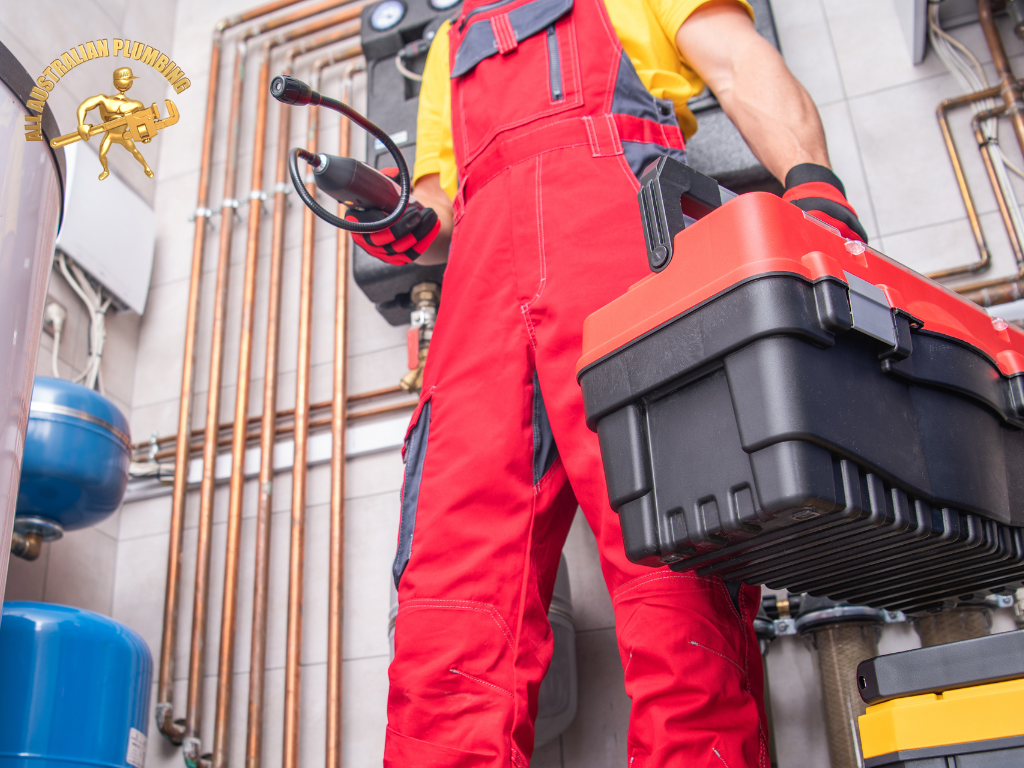
Leveraging Professional Expertise in Leak Detection
The integration of Wi-Fi-enabled leak detectors with professional plumbing services offers a new dimension of leak management. By connecting these detectors to plumbing service providers, homeowners can ensure a swift professional response in case of a leak. This partnership means that in addition to receiving an alert, a plumbing service can be automatically notified, allowing for quick dispatch of a plumber to the location.
Benefits of Integrating Detectors with Plumbing Services
This collaboration can be particularly beneficial for addressing leaks that require immediate professional intervention. It can prevent minor leaks from escalating into major emergencies, thereby saving time, reducing potential water damage, and ensuring peace of mind for homeowners. Additionally, plumbing services can provide remote diagnostics in some cases, offering guidance or temporary solutions until they arrive.
Technological Solutions for Gas Leak Detection
How Electronic Gas Detectors Function and Their Sensitivity Levels
Electronic gas detectors are vital for maintaining safety in homes, designed to detect leaks of gases like natural gas, propane, and carbon monoxide. These detectors employ sensors that are sensitive to specific gases in the air. When the concentration of gas in the environment reaches a potentially hazardous level, the detector triggers an alarm, alerting the occupants to the danger.
The sensitivity of these detectors is a crucial aspect. Some are designed to detect the slightest traces of gas, providing an early warning well before the levels become dangerous. This high sensitivity is key to preventing gas-related incidents, allowing for timely and effective action.
Installation Guidelines and Optimal Locations in the Home
For optimal effectiveness, electronic gas detectors should be strategically placed where gas leaks are most likely to occur — near gas stoves, furnaces, water heaters, and in areas like basements where gas-powered appliances are common. Additionally, installing them near sleeping areas ensures that the alarm will wake residents if a leak occurs overnight. The specific height for installation depends on the type of gas, as some are heavier or lighter than air, which should be in line with the manufacturer’s recommendations.
Smart Gas Alarms
The Role of Smart Gas Alarms in Leak Detection and Home Safety
Smart gas alarms represent a technological leap in gas leak detection, providing advanced features such as network connectivity and the ability to integrate with smart home systems. These alarms do more than just detect the presence of gas; they also monitor concentration levels, offering critical data to assess the severity of a leak.
Connectivity with Smartphones and Home Security Systems
A standout feature of smart gas alarms is their connectivity. They can link to smartphones and home security systems, facilitating real-time alerts and updates. This means that homeowners can receive immediate notifications of a gas leak, even when they’re away from home. This feature enables them to take swift action, such as contacting emergency services or activating home safety measures.
Collaborating with Plumbing Services for Gas Leak Resolution
Integrating smart gas alarms with professional plumbing services can provide an added layer of security. Upon detecting a leak, these alarms can be set up to automatically notify a trusted plumbing service. This prompt communication allows for the quick dispatch of experienced technicians who can safely resolve the issue.
This collaboration with plumbing services is especially crucial for gas leaks, as they often require professional intervention due to the potential risks involved. The combination of advanced technology in the alarms and the expertise of plumbing professionals ensures a comprehensive approach to gas leak detection and resolution, safeguarding homes against the dangers of gas leaks.
Conclusion
Staying informed and adopting new technologies in leak detection is a wise investment for homeowners. As technology continues to evolve, staying ahead of these advancements will ensure that homes remain safe, efficient, and equipped to handle the challenges of modern living.

